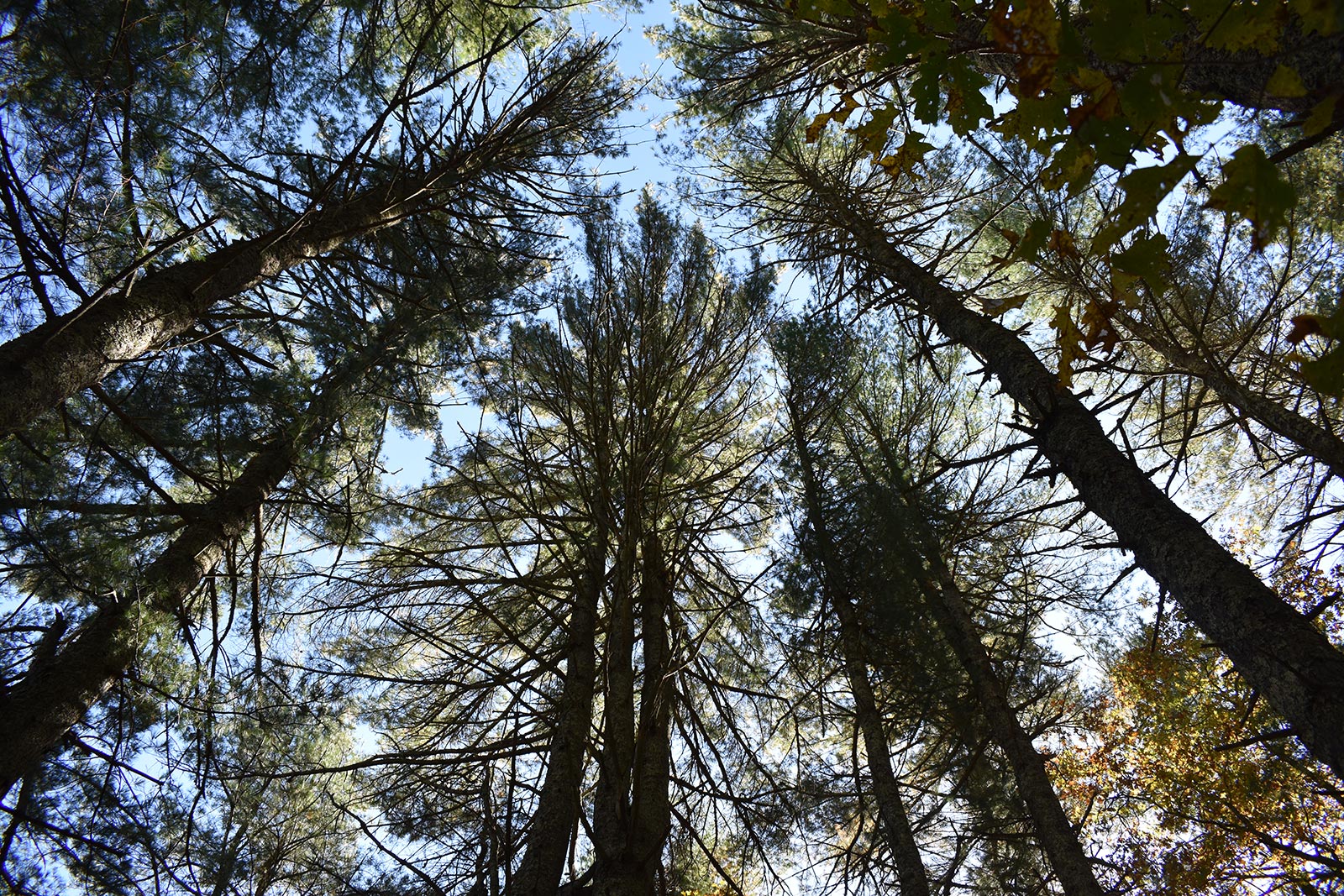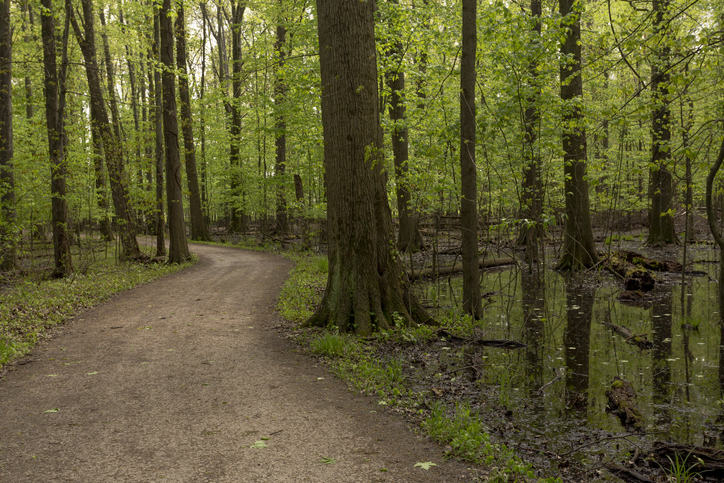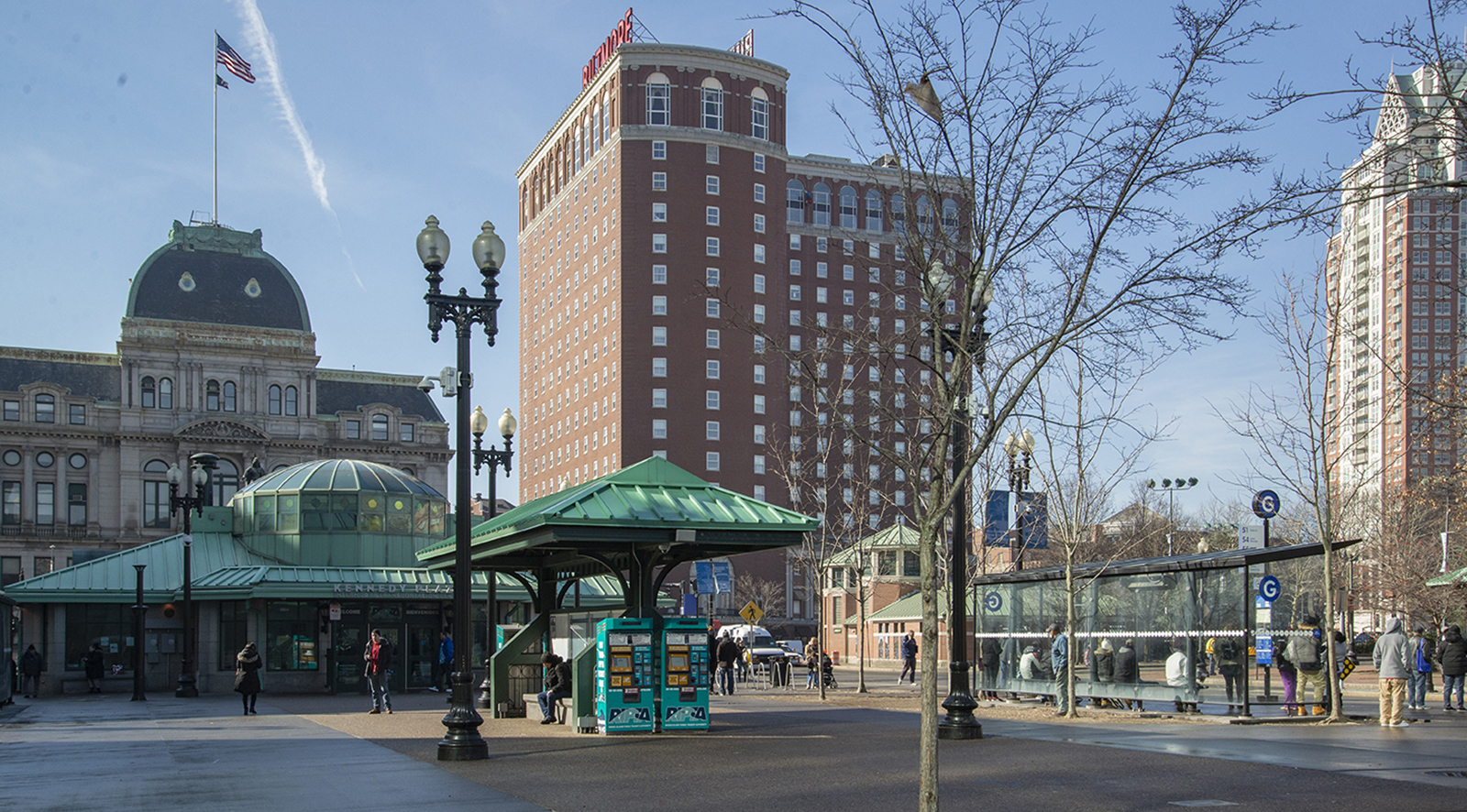What the East Bay Bike Path Can Teach Us About Climate Action
January 20, 2023
On a sunny yet brisk fall afternoon, I packed my bicycle’s panniers with sunscreen, water, nuts, earmuffs, and a book, hopped onto the saddle, and set off on a long ride on the East Bay Bike Path.
The East Bay Bike Path stretches 14.5 miles from Providence to the town of Bristol, tracing the Providence River south as it broadens into the Narragansett Bay. The mostly flat path traverses wetlands, towns, and forested areas, often with clear views of the bay, making it popular with bicyclists, runners, and walkers of all ages. What many might not know — I certainly didn’t at the time — is how the history of the path demonstrates the resilience that we need to address today’s environmental challenges.
From my triple-decker apartment building on the East Side of Providence, I pedaled five blocks to India Point Park, the starting point for the path and the first manifestation of Rhode Islanders’ resilience. Despite the adjacent highway, the 18-acre park is a tranquil spot at the confluence of the Providence and Seekonk rivers. I paused for a moment to gaze across the Providence River. On the west bank, a trio of wind turbines punctuated a cluster of silos and domes, vestiges of the area’s industrial history.
India Point thrived as a major commercial port for hundreds of years. In the 1800s, passenger steamships also docked here, and coal became a key import. But after a devastating hurricane in 1938, Providence’s main port was moved across the river. India Point sat as a scrapyard for three decades. Mary Elizabeth Sharpe, a local landscape architect, saw the potential for something better. She spearheaded a years-long campaign to turn the waterfront scrapyard into a public park. Thanks to her perseverance in surmounting bureaucratic and logistical obstacles — plus donations from hundreds of Rhode Islanders and design ideas from thousands — India Point Park opened in 1974.
Putting my feet back on the pedals, I departed the park onto the East Bay Bike Path. I downshifted to ascend a steep switchback, which led to a bridge crossing the Seekonk River. Cars and trucks rushed by on Interstate 195 mere feet away, but I knew the rest of my ride would feature a more pleasant soundscape, with most of the bike path far from traffic.
I moved to Rhode Island in April 2021 for my first job after graduating from college. I lived there for only 15 months, returning to the Midwest for graduate school in fall 2022, but I remain enamored with the Ocean State. Biking on the East Bay Bike Path was one of my favorite ways to fill my soul with nature and get good exercise. I rode the section of the path closest to Providence many times, but that autumn day would mark the first time that I rode the entire path round trip.
Soon after the path arced away from another busy road, I followed a narrow causeway across a cove favored by great blue herons. Surrounded by water, I inhaled deeply and felt a sense of peace. But perhaps unease would have been more appropriate. As the climate changes, sea levels in the Northeast are rising faster than the global average. Rhode Island has already experienced nearly a foot of sea-level rise since 1930 — and the pace is quickening. Climate modelers expect an additional foot here by 2050 and between 2 and 7 feet above today’s levels by 2100, depending on future greenhouse gas emissions. On top of that, flooding due to extreme rainfall is becoming more common.
As the water advances, eventually inundating this section of path, the herons will adapt to the shifting shoreline. The bicyclists will have to follow suit. And the motorists on the other side of the cove won’t be much safer from the rising water.
It wouldn’t be the first time Rhode Islanders have rethought their use of this land. Directly to my right, a short fragment of railroad tracks glinted in the sun — a remnant of the defunct Providence-Warren-Bristol rail line. The entire East Bay Bike Path follows a route taken by trains starting in the 1850s. The rising popularity of cars put an end to passenger service in 1937. Freight service continued to sputter along until the mid-1970s, around the time India Point Park opened.
The old tracks could have remained a monument to an irretrievable past. Instead, two state representatives proposed converting the route into the state’s first major bike path. The plan faced vehement opposition from residents who wanted road maintenance to be prioritized, as well as those who feared an increase in crime. Bicycling advocates rallied to the cause and eventually prevailed. The full path opened to nature-lovers and commuters in 1992. It quickly became so popular that the state continued converting abandoned rail lines into bike paths. Despite being only 37 miles wide and 48 miles long, the nation’s smallest state now has 60 miles of off-road bike paths, including portions of the East Coast Greenway that will eventually extend from Maine to Florida.
My ride continued with a tree-lined, mostly residential swath of the town of Barrington. Often, several minutes would pass without me seeing another bicyclist or pedestrian, in contrast to the summer bustle. Many trees still clung to their yellow leaves despite the late fall date. I made a point to enjoy the foliage, knowing that I had months of gray scenery ahead of me. Where unpaved trails sprouted from the main path, I parked my bike for a short walk through the woods.
After rejoining the path, I crossed a pair of short bridges into Warren, a town of 10,000 that is confronting the reality of sea-level rise head-on. Parts of the town already flood multiple times a year. Warren’s working-class Market Street neighborhood, home to nearly 1,000 people and lined with small businesses, will flood at high tide on a daily basis by 2035, according to local projections. Faced with this existential threat, the town is embarking on an ambitious plan: relocate the neighborhood to higher ground in the Metacom neighborhood. The low-lying area would be stripped of human infrastructure and returned to a wetland, which would provide some natural protection from tides and floodwaters.
The town plans to begin the relocation in 2025. Beyond just retreating from the sea, the vision includes transforming the car-centric Metacom neighborhood into a bike-, pedestrian-, and transit-friendly multi-use development with affordable housing. That future depends on federal, state, and local funding. But the alternative — staying put and building seawalls — would be a futile attempt to preserve the status quo.
With Market Street’s shops and restaurants behind me, I entered another tree-lined stretch of the bike path. I kept pausing to adjust my wardrobe — I was getting hot with my earmuffs on and cold with them off. In an adventurous mood, I took an extended detour through Colt State Park, where families were walking their dogs and the bay shone a brilliant blue. As I rejoined the last stretch of the path, I began to feel the miles in my legs. Soon, Bristol Harbor came into view, with moored sailboats bobbing in the water and seagulls sweeping across the sky. The end of the bike path delivered me into a small waterside park. Atop a tall pole fluttered the state flag: “HOPE,” it proclaimed.
I dismounted my bike to drink water and catch my breath on the boardwalk. Then I walked a block to the Beehive Café, a hub for bicyclists seeking rest and refreshment at the halfway point of their rides. I ordered a lemon ricotta pancake and a hot apple cider chai to go. With my mid-afternoon treat, I sat on a bench in the park and pulled out my book, a novel that I had read many times.
The familiar story comforted me during an uncertain time. The climate crisis is upending so many of the assumptions I held when I was younger about how the world works. I no longer take for granted that all the fresh foods I want will always be available, that making faithful investments in a 401(k) will produce enough money for retirement, that scientific truth will inevitably triumph over misinformation. But instead of writing off society’s response to the crisis as a failure, I chose hope. I chose to become a science communicator to contribute to collective solutions. Every day, I choose to build a meaningful future for myself based not on how the world was, but how it is and how it could become.
As the warmth of the apple cider chai left my body, I felt a renewed nip in the air. I reapplied sunscreen, buckled my helmet, and did some quick leg stretches. I took one last look around the park, which will be subsumed by the harbor if the water rises 5 feet over today’s level. Then I turned northward to begin the return journey.
I hoped my legs would last all the way back to Providence. The round trip would total 35 miles — by far my longest bike ride to date. To my left, the bay drifted in and out of view as I passed through the coastal towns. Soon, I reached the cove again, and the city skyline rose across the water. The traffic noise grew from a buzz to a roar. I put on my sunglasses as the path turned west and crossed the bridge alongside I-195. My legs felt well-used, but not in pain, as I coasted down the last switchback into Providence.
Climate change presents enormous challenges. Yet along the entire length of the East Bay Bike Path, I see the resilience that we will need to confront the crisis while creating new opportunities in the process. Fifty years ago, Mary Elizabeth Sharpe helped her neighborhood convert the waste of the past into a respite for future generations. Thirty years ago, forward-thinking planners repurposed an obsolete rail line to create a new connection between communities and bring Rhode Islanders closer to nature. And today, the leaders of Warren are adapting to the climate reality by boldly reimagining what their town can be.
The sooner we crank down the global thermostat of carbon emissions, the better. But no matter what we do, we can expect decades of rising temperatures and rising seas. The time is long gone to conserve the past unchanged like a sepia photograph. Instead, we must fundamentally restructure our societal systems, our individual lifestyles, our relationships with nature. Resilience today means not bouncing back from adversity, but rather bouncing forward — adapting with creativity and collaboration.
In India Point Park, I paused for one last drink of water. The day’s ride nourished my body and soul. I felt a sense of accomplishment, and my heart filled with gratitude to live in a beautiful place. As the sun neared the horizon, I exited the park via a pedestrian bridge over the highway. Maybe one day, the innovators of my generation will build a high-speed public transit network in place of that concrete shrine to fossil-fuel-powered travel. In the meantime, I pedaled home, ready for whatever the next day would bring.
Scott Hershberger is a science communicator and a M.S. student in Life Sciences Communication at the University of Wisconsin-Madison. He was also a 2020 AAAS Mass Media Fellow.



